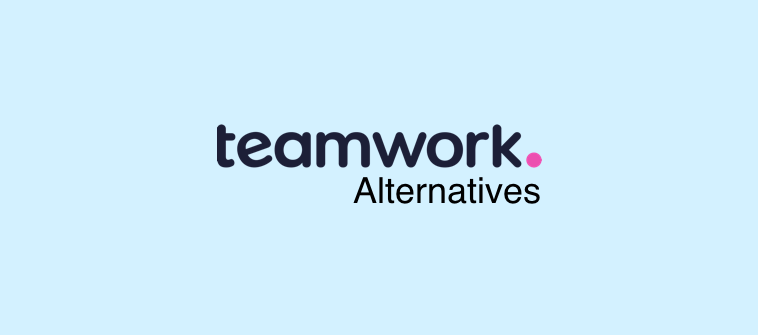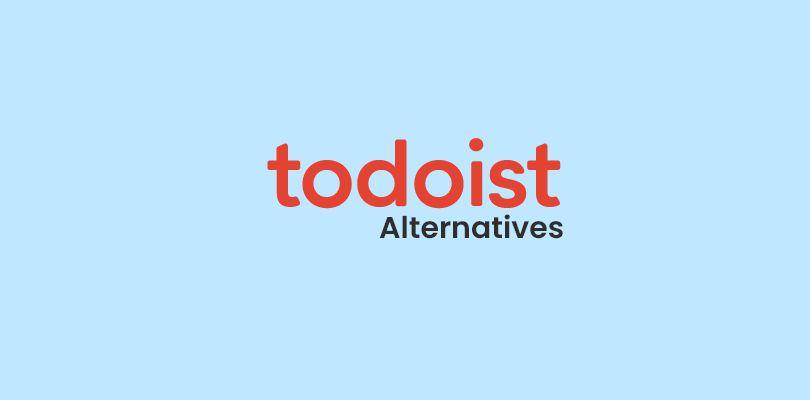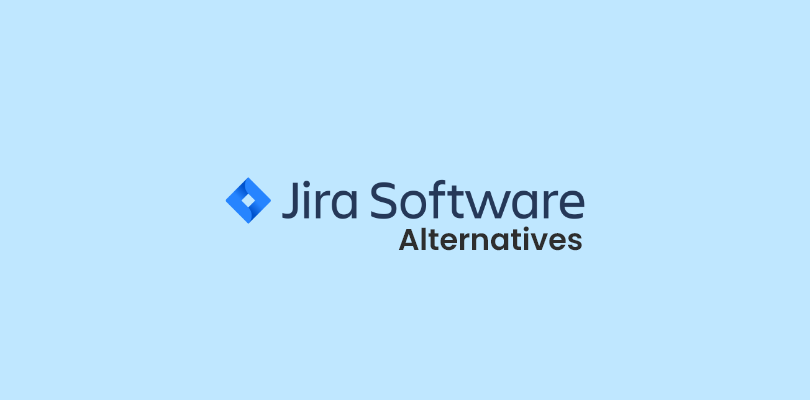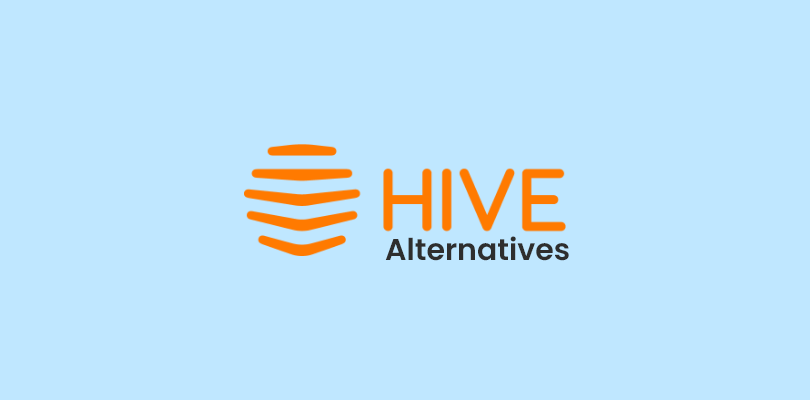Before talking about Wrike Alternatives, Wrike has been a popular name in the project management industry for years, and for good reason. The platform is widely recognized for automating administrative workflows.
But does that compensate for its steep learning curve? Not really, sadly.
If you’re looking for Wrike alternatives for startups or SMBs, you’d be surprised to know that there are plenty. Some even offer a better package than Wrike at a more cost-effective price.
So, why don’t you give it one last shot before making a decision? I’ve done all the hard work – the researching, the digging, the testing…everything, so you don’t have to.
Before we move into that, here’s a glance at the top 15 most chosen Wrike competitors:
| Wrike Alternatives | Best For | Pricing Starts From |
| ProProfs Project | Planning, Collaborating & Delivering Projects on Time | Forever free for small teams.Paid plan starts at $39.97/month/unlimited users |
| Smartsheet | Real-Time Project Collaboration | $9/member/month |
| Trello | Workflow Automation | $5/user/month |
| Jira Software | Project Issue Tracking for Developers | $8.15/user/month |
| Asana | Strategic Project Planning | $10.99/user/month |
| ClickUp | Generating Detailed Reports | $7/user/month |
| Basecamp | Remote Work Collaboration | $15/user/month |
| Zoho Projects | Task Automation | $4/user/month |
| monday.com | Managing Project Resources | $27/month/3 seats |
| ProofHub | Built-in Proofing Tools | $79/month/10 users |
| Teamwork.com | Client Management | $10.99/user/month(3 users minimum) |
| Scoro | Automating Project Planning | $26/user/month |
| Notion | Building Product Roadmaps | $10/seat/month |
| nTask | Online Task Management | $3/month |
| Celoxis | Enterprise Portfolio Management | $15/month |
What Is Wrike?
Wrike is a cloud-based project management software designed to collaborate, organize tasks, and manage projects effectively. It’s a versatile tool that can be used for a wide range of projects, from simple tasks to complex workflows.
The software is used by teams of all sizes and industries – marketing, IT, design, and professional services. It’s particularly well-suited for teams collaborating on multiple projects simultaneously.
Wrike Pricing
Wrike offers a tiered pricing model to cater to different team sizes and project complexities. It’s primarily a per-user, per-month subscription-based service.
Here’s a quick breakdown of the pricing plans –
- Team Plan: $9.80 per user per month (billed annually)
- Business Plan: $24.80 per user per month (billed annually)
- Enterprise & Pinnacle Plans: Custom pricing
There’s also a free plan with limited storage space and restrictions on certain features, such as custom fields, portfolio management, dashboards, and real-time reports.
Why Do You Need an Alternative to Wrike?
Let’s be brief—while Wrike’s pricing is competitive, it might still be higher than a lot of alternatives in the marketplace. It surely offers a free plan, but the limitations can sometimes restrict usage.
On the other hand, competitors like ProProfs Project offer a more competitive freemium plan with no restrictions to features whatsoever.
But that’s not the only reason project managers and team leads are on the hunt for alternatives to Wrike. My experience says certain industries or teams might require niche features that Wrike doesn’t support well.
For example, startups and SMBs often prefer ProProfs Project, as they are looking for an easy-to-understand platform with advanced features (resource planning, time tracking, billing-invoicing automation, etc.).
Similarly, Jira—although it has a high learning curve—is still preferred by software development teams thanks to its strong integration with development tools.
I hope you get the point. Let’s now move straight to the comparison in the next section.
Which Is the Best Wrike Alternative for You?
Running too short on time to read the full blog? No worries, I’ll share my top 3 picks from the list –
- ProProfs Project: A user-friendly project management tool, perfect for startups and SMBs. Its free plan offers task management, real-time collaboration, and various project views (calendar, Gantt, Kanban, list). You can even generate estimates and invoices. It’s a comprehensive Wrike alternative that packs a punch, especially considering its free tier.
- Basecamp: One of the highly recommended project management tools like Wrike for remote work collaboration. Its features include message boards, real-time group chat, and a unique take on Kanban with its card table and Hill charts. Consolidated billing and simplified onboarding make it a great alternative to Wrike.
- Scoro: A powerful all-in-one solution for project management, resource planning, and billing. Its standout feature is the ability to visualize project timelines with Gantt charts and gain real-time insights through customizable dashboards.
For a more comprehensive understanding, come back later to read the full blog.
List of the 15 Best Wrike Alternatives
To put together this comparison of the 15 best Wrike alternatives, I gathered insights from industry experts (project managers, team leads, CEOs), peers, past colleagues, and client testimonials from software review sites.
How did it matter?
Well, I had to understand which alternatives they’d choose and why. And with my years of experience with most of these tools, I provided pros and cons to help you make an informed decision.
Let’s get started.
1.ProProfs Project – Best for Planning, Collaborating & Delivering Projects on Time
ProProfs Project is a cloud-based project management platform. It’s one of the best Wrike alternatives for startups or SMBs, in my opinion. I had the chance to test it without any limitations whatsoever – thanks to the free plan.
With ProProfs Project, you can set due dates, track progress, prioritize projects, and collaborate with your team in real time. The software also has automation capabilities, where you can generate billing estimates, invoices, and actual expenses.
I also like that it offers multiple project progress views – a calendar, Gantt chart, Kanban board, and list. As for advanced features like project reports, time tracking, portfolio management, and resource planning – you get all of these in the free plan.
What you’ll like:
- Organizes tasks and workflows using interactive Kanban boards
- Schedules projects effectively and stay on top of deadlines
- Project scheduling to plan and manage project deadlines
- Task comments for providing feedback and keeping track of discussions
- Timesheets for recording and managing employee work hours
What you may not like:
- Dark user interface option is not available
- No dedicated account manager for the free plan, unlike paid
Pricing: A freemium plan is available for small teams. Paid options start from $39.97/month.
2.Smartsheet – Best for Real-Time Project Collaboration
Next is Smartsheet, which is quite similar to Wrike when it comes to project management. The platform allows everyone in the team to work together in real time from anywhere. This feature is extremely handy for remote teams.
In addition to real-time collaboration, the software also offers a range of other features, including customizable templates, Gantt charts, automated workflows, etc.
I also found the platform’s drag-and-drop interface pretty sound. It’s easy to manage tasks, and you can assign them to specific team members, ensuring everyone is on the same page.
What you’ll like:
- Branded dashboards combining live data for real-time information sharing
- Reports for combining and filtering sheet data for clear insights
- Workload tracking to identify availability, monitor tasks, and resolve over-allocations
- Automated workflows with no-code customization for streamlining tasks
- Document generation to create PDFs, automate forms, and prepare contracts
What you won’t like:
- Users have noted that duplicating sheets is not straightforward
- No team workload tracking or timeline view in the basic plan
Pricing: Starts at $9/member/month.
3.Trello – Best for Workflow Automation
Trello is an excellent alternative to Wrike that lets you automate project workflows to manage repetitive tasks.
With Trello’s automation, I could create rules that instantly run a set of actions when triggered by a defined action. It has a simple native language system that requires no coding, so you can set up any automation in seconds.
I like that the software lets you create boards, lists, cards, etc., to organize tasks and collaborate with team members.
For example, you can create a rule that moves a card to the top of the list, notifies the board – “Can someone take this?” and sets an immediate due date when a card is labeled “urgent.”
What you’ll like:
- Visual boards for organizing projects with a Kanban-style workflow
- Drag-and-drop functionality for task movement and progress tracking
- Checklist creation to break down tasks into manageable sub-steps
- Power-Ups to integrate third-party tools and enhance Trello’s functionality
- Label system for categorizing and filtering tasks for better organization
What you may not like:
- Users have reported that Trello’s reminder and alert features are not as customizable as needed
- No timeline, map, calendar, table, and other views in the free plan
Pricing: A free plan is available for up to 10 boards per workspace. Paid options start from $5/user/month.
4.Jira Software – Best for Project Issue Tracking for Developers
Jira is an exceptional Wrike alternative for tracking project issues. Whether you’re tracking bugs, monitoring tasks, or resolving roadblocks, Jira can always keep your project on track.
You can effectively capture, categorize, and prioritize issues – keeping your team focused on the most critical tasks. I also found it has customizable fields that allow you to tailor the issue-tracking process to specific needs.
With the software’s real-time updates, you can inform everyone of the latest developments.
The tool’s flexible structure allows for customization of workflows, user additions, and integration with third-party tools, ensuring that the project management system grows with your organization.
What you’ll like:
- Agile boards for visualizing workflows with Kanban and Scrum methodologies
- Issue tracking to manage bugs, tasks, stories, and other project elements
- Sprint planning and tracking for managing sprints and burndown charts
- Issue prioritization for effective prioritization and resource allocation
- Issue linking to connect related issues and dependencies for better context
What you may not like:
- Many users find Jira’s extensive customization options overwhelming and complex
- 2 GB of file storage space in the free plan is limiting for most teams
Pricing: A free plan is available for up to 10 users. Paid options start from $8.15/user/month.
5.Asana – Best for Strategic Project Planning
Asana is another robust project management platform that stands tall as a worthy alternative to Wrike.
A close peer of mine uses the software, and from what I saw – it does all the basic things, like letting you create projects, assign tasks, set deadlines, and collaborate with your team.
The software gives you real-time insights, with a clear overview of project progress, task deadlines, etc. You can see how your team is doing, what’s due, and what needs attention. In my opinion, this level of visibility is crucial to keep projects on track and minimize miscommunication and delays.
Asana’s custom workflows add a layer of flexibility, enabling you to tailor the platform to your unique team dynamics and project requirements.
What you’ll like:
- Project views to visualize tasks in list, board, or timeline formats
- Customizable fields for capturing specific project data and filtering tasks
- Goal setting with clear objectives and progress tracking for focused work
- Advanced search to find specific tasks and information quickly across projects
- Forms for collecting project requests and streamlining data intake
What you may not like:
- Users find Asana’s notification system inefficient, as it requires constantly checking the app or emails to see updates
- No project dashboards, task dependencies, etc., in the free plan
Pricing: A free plan is available for up to 10 teammates. Paid options start from $10.99/user/month.
6.ClickUp – Best for Generating Detailed Reports
Next, I have ClickUp, another project management software that can be used as an alternative to Wrike.
With ClickUp, you can easily track and organize projects in one place – making it effortless for everyone on the team to collaborate. The platform has customizable views that allow you to manage work in a list, Gantt chart, or dashboard format.
You can also assign comments with action items, chat in real time, and share attachments, further easing team collaboration. I like how the software lets you add visual widgets for team members, tasks, sprints, time tracking, statuses, docs, embeds, and more to track progress.
What you’ll like:
- Customizable views like list, board, Kanban, Gantt, and Mind Map formats
- Nested tasks and subtasks to break down projects into manageable work units
- Workload management to assign tasks, track progress, and monitor team capacity
- Real-time chat for seamless communication and collaboration within projects
- Integrations with Google Drive, Slack, and Dropbox for centralized data
What you may not like:
- Only 60 (times) usage access to Gantt charts in the free plan
- Some users find the mobile app version confusing and less functional than the web versions
Pricing: A free plan is available with limited file storage space. Paid options start from $7/user/month.
7.Basecamp – Best for Remote Work Collaboration
As someone who has worked remotely, I appreciate Basecamp’s focus on remote work collaboration. The software makes it easy to stay connected with your team no matter where you are.
It offers multiple features that make collaboration with team members seamless, including message boards, real-time group chat, and automatic check-ins.
Basecamp’s unique take on Kanban, with its card table, makes it easy to track progress. I like their Hill charts—they provide a visual representation of where projects stand. Plus, the ability to consolidate billing and simplify onboarding makes working with the software a breeze.
What you’ll like:
- Unlimited space to organize, share, and store documents within each project
- To-do lists allow task assignments, due dates, and notifications for completed or overdue tasks
- Direct Messages, or “Pings,” enable ad hoc chats for quick, focused communication
- Built-in message boards keep entire conversations on specific topics together
- Integration with other services via “Doors” for linking external tools directly within Basecamp
What you won’t like:
- Some users feel that Basecamp lacks advanced project management features such as resource management and scheduling
- No native time tracking; requires third-party integration
Pricing: Starts at $15/user/month.
8.Zoho Projects – Best for Task Automation
My next pick as the best Wrike alternative is Zoho Projects. It is a reliable project management companion, and you may instantly like its task automation capabilities.
With the help of its blueprint editor, you can easily automate routine task processes by designing workflows. The tool lets you set up task statuses, loop in the right people, and automate task field updating and email alerts.
The software also excels in providing real-time visibility into project progress. With its comprehensive reporting tools, it’s pretty simple to monitor team performance and identify potential roadblocks.
What you’ll like:
- Phase management for structuring projects with defined stages and workflows
- Task automation with Blueprints to pre-define steps and automate repetitive tasks
- Gantt charts and calendar view for visualizing project timelines and dependencies
- Issue tracking and bug reporting for identifying and resolving project hurdles
- Integration with Microsoft Teams for streamlining communication and collaboration
What you may not like:
- No project templates in the free plan
- Some users feel that the user interface of Zoho Projects is outdated and less intuitive
Pricing: A free plan is available for up to 2 projects. Paid options start from $4/user/month.
9.monday.com – Best for Managing Project Resources
If you’re looking for Wrike alternatives that bring the best of resource management, I think monday.com can be a good choice.
The tool allows you to plan the use of resources and schedule their allocation. This includes anything your business needs to operate effectively, such as employees, equipment, or even brand assets.
With monday.com, you can easily see who is working on what, how much time each task takes, and when each deadline is due.
In my opinion, visualizing each team member’s workload makes it easy to proactively adjust schedules to ensure everyone is working at their peak performance. This not only improves project efficiency but also boosts team morale and productivity.
What you’ll like:
- Kanban boards, calendars, timelines, and charts for flexible project planning
- Form automation to capture data and populate boards with relevant information
- Dependency management to establish relationships between tasks and visualize project flow
- Formula columns for performing calculations and automating updates within boards
- Guest access for granting permissions to external collaborators without creating separate accounts
What you may not like:
- Paid plans require purchasing for at least 3 users
- Users have reported difficulties with setting up and managing financial tracking across multiple projects
Pricing: A free plan is available for up to 2 seats. Paid options start from $27/month/3 seats (at $9/seat).
10.ProofHub – Best for Built-in Proofing Tools
ProofHub is one of the best Wrike competitors and has impressive time-tracking capabilities.
With the built-in timer, you can easily track the time team members spend on each task. This not only ensures accurate billing but also provides valuable insights into project progress.
I liked how the tool allows time estimates to be set and compared to actual time spent. It can be instrumental in identifying areas for improvement and optimizing your workflow.
Beyond time tracking, ProofHub offers other features, such as a centralized communication hub, task management capabilities, and team collaboration.
What you’ll like:
- Annotated proofing tools for managing feedback on designs and documents
- Discussion boards for team communication and centralized feedback exchange
- Customizable reports for generating insights into project performance and team activity
- Draft control for ensuring project consistency and preventing accidental edits
- Role-based permissions for controlling access and user permissions within projects
What you may not like:
- No workflows or reporting capabilities in the basic plan
- Some users have noted that ProofHub lacks adequate customer support
Pricing: Starts at $79/month/10 users.
11.Teamwork.com – Best for Client Management
If your agency thrives on client projects, Teamwork.com might be your perfect Wrike alternative.
In my experience with client projects, keeping everyone informed can be a challenge. This software tackles this with features like real-time task updates, client portals, and built-in chat. (Imagine the relief of never having a client ask, “Is this project done yet?” again!)
But what truly sets Teamwork.com apart is its focus on profitability. You can track billable hours, set project rates, and generate invoices directly from the platform.
The software even has a user-friendly interface, making it easy for non-technical teams to get up and running quickly.
What you’ll like:
- Time tracking with billable rates for generating accurate invoices
- Integrated client portals for secure collaboration and feedback exchange with clients
- Pre-built templates and intake forms to streamline client onboarding
- Advanced task dependencies to establish complex relationships and manage critical paths
- Meeting notes to capture decisions, assign action items, and track the next steps
What you may not like:
- Users have reported that Teamwork.com’s email integration lacks advanced email tracking capabilities
- Paid plans require purchasing for a minimum number of users that increases with every plan
Pricing: Starts at $10.99/user/month (3 users minimum).
12.Scoro – Best for Automating Project Planning
Scoro is a multifaceted project management platform that enhances team efficiency and project clarity. Its standout feature is the integration of task management, collaboration, and billing into one cohesive system.
One aspect I find incredibly useful is Scoro’s advanced task management. The Gantt chart feature offers a clear visual timeline, making it easy to oversee project progress and make schedule adjustments.
The real-time KPI dashboard is impressive. I saw it provides instant insights into project performance for swift, informed decision-making. From my perspective, the customizable dashboards make Scoro indispensable for teams looking for Wrike competitors to boost project success.
What you’ll like:
- Adapts quickly to changes to visualize how delays or logged hours impact project plans
- Monitors team’s utilization rates to ensure balanced workloads
- Project templates to automate routine tasks and convert them into new projects
- Compares actual project budgets against estimates to maintain profitability
- Integration with popular tools like Google Calendar, Microsoft Exchange, QuickBooks, etc.
What you may not like:
- Some users have found the synchronization between Scoro and Google Calendar is problematic; sometimes
- No Gantt chart and dependencies in the basic plan
Pricing: Starts at $26/user/month.
13.Notion – Best for Building Product Roadmaps
Notion is one of the most versatile Wtrike alternatives designed to simplify building product roadmaps.
The software offers a seamless and dynamic way to visualize and manage project trajectories. What sets it apart is its flexibility in creating detailed, interactive roadmaps. Oh, and these can be customized to fit your specific needs.
In my experience, the tool is flexible. And that is bolstered by powerful templates that cater to various project needs, from roadmaps to task lists. I also appreciate how it supports real-time collaboration, enabling everyone to edit and comment on documents simultaneously.
What you’ll like:
- Nested content blocks for organizing projects with tasks, subtasks, and relevant details
- Formula capabilities to automate calculations and track project metrics within pages
- Relation property to connect related content across Notion pages and databases
- Collaboration tools for real-time editing, commenting, and task delegation
- Version history to track changes, revert to previous versions and maintain project transparency
What you may not like:
- Users have reported that Notion can slow down significantly when working with large databases
- File upload allowance is limited to only 5 MB per file in the free plan
Pricing: A free plan is available for up to 10 guest invites. Paid options start from $10/seat/month.
14.nTask – Best for Online Task Management
nTask is a project management tool designed to enhance team collaboration and streamline workflows.
One feature I particularly appreciate is the meeting management tool. I could easily schedule, organize, and track meetings seamlessly. This can significantly improve team coordination. Additionally, nTask’s risk management feature helped us identify potential project risks early on, which I believe is crucial for project success.
You’ll like the software’s customizable project templates and detailed time-tracking tools. From my perspective, nTask is a versatile alternative to Wrike – ideal for teams looking to boost productivity and achieve their goals efficiently.
What you’ll like:
- Meeting management for scheduling meetings, taking notes, and keeping track of action items
- Time tracking to monitor time spent on tasks and improve project efficiency
- Issue tracking for identifying, managing, and resolving project roadblocks
- Gantt charts for scheduling tasks, visualizing project timelines, and identifying critical paths
- Mobile app for managing projects and tasks on the go from any device
What you may not like:
- Only 100 MB file storage allowance in the free plan
- Some users have experienced poor customer support, which highlights concerns about reliability
Pricing: A free plan is available for up to 5 people. Paid options start from $3/month.
15.Celoxis – Best for Enterprise Portfolio Management
In my experience, Celoxis stands out as a feature-rich project portfolio management (PPM) platform. Having used project management tools for years, I can tell you that the platform offers decent value as a Wrike alternative.
What impressed me the most about the tool is its ability to optimize project portfolios and enhance resource allocation (something I always look for in a PPM tool).
Specific features that resonated with me include the ability to tailor workflows to specific needs and generate insightful reports that shed light on project health.
Based on my judgment, the company caters to businesses of all sizes and offers cloud-based and on-premise deployment options, providing flexibility based on your needs.
What you’ll like:
- Project request tracking to capture, evaluate, and prioritize project requests
- Automatic scheduling for efficient resource allocation and project timeline creation
- Inter-project dependencies to manage relationships between projects
- Multiple resources per task for assigning multiple team members to tasks
- Profit & margin tracking for gaining insights into project financial performance
What you may not like:
- Some users have experienced issues with the data reporting features
- Users have noted that the tool may not be the best for Agile project management methodologies
Pricing: Starts at $15/month.
Evaluation Criteria
The evaluation of products or tools chosen for this article follows an unbiased, systematic approach that ensures a fair, insightful, and well-rounded review. This method employs six key factors:
- User Reviews / Ratings: Direct experiences from users, including ratings and feedback from reputable sites, provide a ground-level perspective. This feedback is critical in understanding overall satisfaction and potential problems.
- Essential Features & Functionality: The value of a product is ascertained by its core features and overall functionality. Through an in-depth exploration of these aspects, the practical usefulness and effectiveness of the tools are carefully evaluated.
- Ease of Use: The user-friendliness of a product or service is assessed, focusing on the design, interface, and navigation. This ensures a positive experience for users of all levels of expertise.
- Customer Support: The quality of customer support is examined, taking into account its efficiency and how well it supports users in different phases – setting up, addressing concerns, and resolving operational issues.
- Value for Money: Value for money is evaluated by comparing the quality, performance, and features. The goal is to help the reader understand whether they would be getting their money’s worth.
- Personal Experience / Expert’s Opinion: This part of the evaluation criteria draws insightful observations from the writer’s personal experience and industry experts’ opinions.
Final Thoughts
Figuring out which of these Wrike alternatives is the best choice for you requires a bit of understanding of your company’s requirements. Things such as your team size and the features you need, plus the budget you have matter a lot.
Now, some of you may search Google for “Wrike alternatives free,” especially if you have a startup or a small business with a limited budget.
For that, I’d especially recommend a project management platform like ProProfs Project, and I believe you can guess the reason.
It’s one of the software solutions on the list that offers a free plan with no feature restrictions, which, according to me, is excellent for small teams. You can test the waters by signing up and then decide if it’s worth your investment.
Learn More About the Best Wrike Alternatives
Can I import my data from Wrike to an alternative?
Yes, it’s generally possible to import data from Wrike to an alternative project management tool. Most modern project management software like ProProfs Project offers data import features to facilitate a smooth transition from one platform to another.
Do the Wrike alternatives offer customer support?
Yes, every Wrike alternative mentioned above has customer support.
For example, ProProfs Project offers customer support through various channels, including live chat, phone, email, and an online contact form. You can find this information on the ProProfs Contact Us page here.
Can I integrate the alternatives with other software I use?
Yes. All the Wrike alternatives in the list can be integrated with most third-party tools you use.
For instance, ProProfs can be integrated with Google Calendar and Microsoft Outlook. You can also request specific integration support from the software vendor.
FREE. All Features. FOREVER!
Try our Forever FREE account with all premium features!





